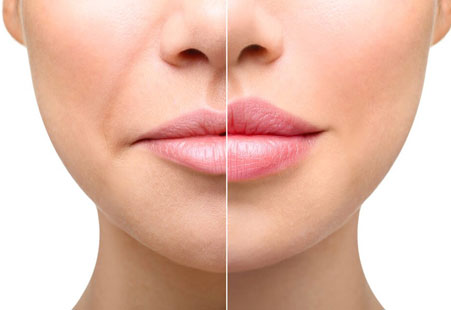“Filler moustache,” “sausage lips,” and “duck lips” are a few words used to describe lip filler migration. Many people who want to enhance or restore their lip volume are fearful of this potential complication. However, there are a lot of things that are misunderstood about it.
The demand for hyaluronic acid lip fillers has been on the rise. And this demand has led to many shoddy clinics and practitioners offering this service. Many cases of lip filler migration can be attributed to this.
What Is Lip Filler Migration?
Lip filler migration is defined as the movement of the filler away from the injection site. It can move away in any direction and at variable distances.
More commonly, it makes the lip edge (vermillion border) less defined. The crisp, distinctive boundary between the lips and the skin above is diminished.
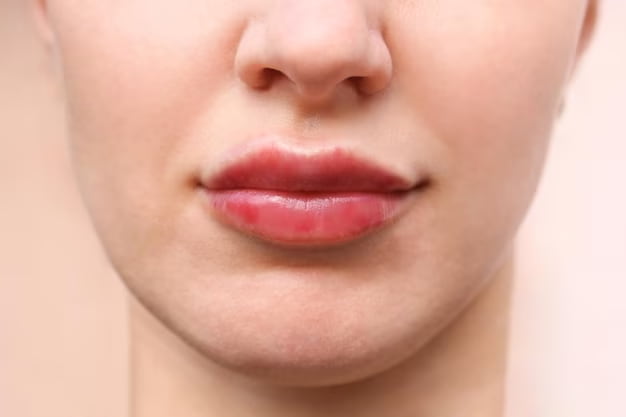
The filler can also end up in the white roll (white border on top of the upper lips) or even the philtrum (skin groove between the nose and the lips). It is possible for the filler to migrate towards the chin as well if it’s been injected into the lower lip.
It’s important to note that lip filler migration can happen over the course of weeks, months, or even years. Some people end up experiencing it quite rarely, while it’s a common occurrence for others.
In general, though, lip filler migration is a rare complication of the procedure. Its risk can be minimised with an experienced and licensed practitioner. Lip fillers are a safe procedure with a high patient satisfaction rate.
What Are Lip Filler Migration Signs?
The unnatural appearance of the lips is one of the most common signs of lip filler migration.
As mentioned above, they can look like sausage rolls or resemble a duck’s bill. However, there may be other signs like the following:
- Hard lumps or bumps (one or more of them)
- Difficulty closing the lips
- Pain
- Discomfort
- Swelling
- Tightness
- Discolouration
Keep in mind that the procedure itself can cause some temporary swelling, bruising and tenderness. However, this should resolve in 1-3 days. If you’re still experiencing problems afterwards, lip filler migration may have taken place.
It’s also important to note that some people end up developing swollen bumps following the procedure as a result of an allergic reaction to the numbing cream or the latex gloves that were used during the procedure.
It’s unlikely that the hyaluronic acid itself will cause any allergic reaction because it’s already naturally found in the body.
What Causes Lip Filler Migration?
Lip filler migration can occur due to different reasons. These are as follows:
Poor Technique
When it comes to injecting the dermal filler, it’s important to place it in the right plane. More specifically, it is the “pars marginalis muscle” in the lip where fillers are injected. However, that’s not all that’s taken into consideration.
The anatomy of the patient’s lips, age, and ethnicity should all determine how and where the filler should go to give natural-looking results.
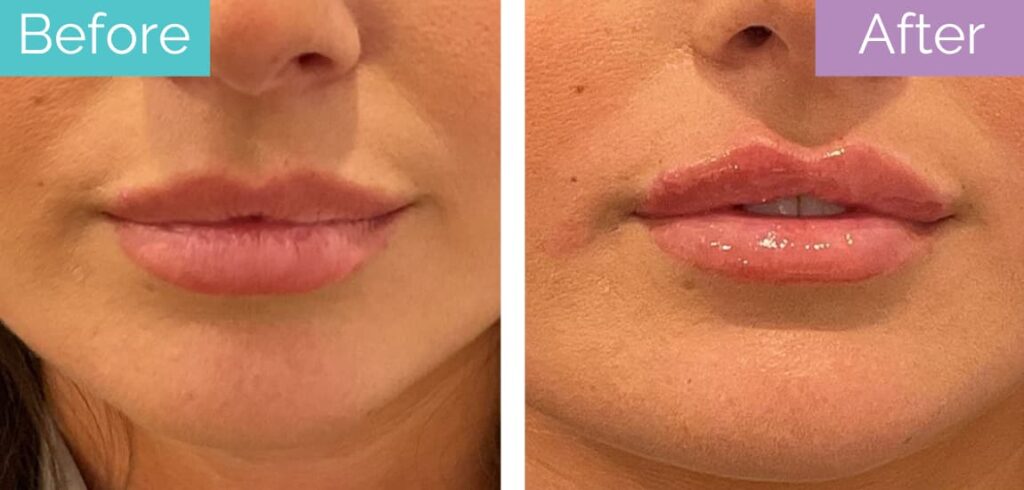
You’ll commonly hear about the “Russian lip technique” or “tenting,” but there’s no one-size-fits-all when it comes to lip fillers.
Your doctor has to analyse different factors before determining the most suitable technique. And there are a lot of variations in this.
It isn’t easy for fillers to migrate. If it were so, it would have been very common because lips are in motion most of the time.
So, this kind of problem occurs when the person injecting the filler doesn’t really have the technique right.
Too Much Filler
Another reason why lip filler migration can happen is that too much filler has been injected.
Depending on the anatomy of your lips, your doctor will decide the number of injections. There’s certainly a limit to what your lips can accommodate naturally.

If the lips are filled beyond that capacity, they’ll end up choosing the path of least resistance and move somewhere else. Some people also make the mistake of getting multiple injections from different providers.
And if one or more of them don’t know that there’s existing filler in the lips, it will definitely cause migration of the one that was first injected.
Using The Wrong Filler
Hyaluronic acid fillers are used for the lips. However, even though the base molecule is the same, different types of fillers are manufactured by different brands.
Their uses vary. Also, fillers have a G prime rating, which tells how “runny” the filler is (the lower the rating, the “runnier” the liquid).
It’s important to understand that, again, there’s no single “right” filler. Your doctor will determine what kind of filler will best suit you, depending on your needs and lip anatomy.
They may use a filler that’s less dense and viscous. However, they may use one that has more viscosity and density for lips that are too thin.
Different viscosity fillers may be injected in different areas to achieve the best results. However, lip filler migration can occur when the choice of filler is not right.
How To Fix Lip Filler Migration?
There are two ways in which the problem of lip filler migration is fixed. These are as follows:
Dissolving The Filler
Hyaluronidase is an enzyme that breaks down hyaluronic acid. So, this substance is used for the dissolution of the existing fillers in the lips.
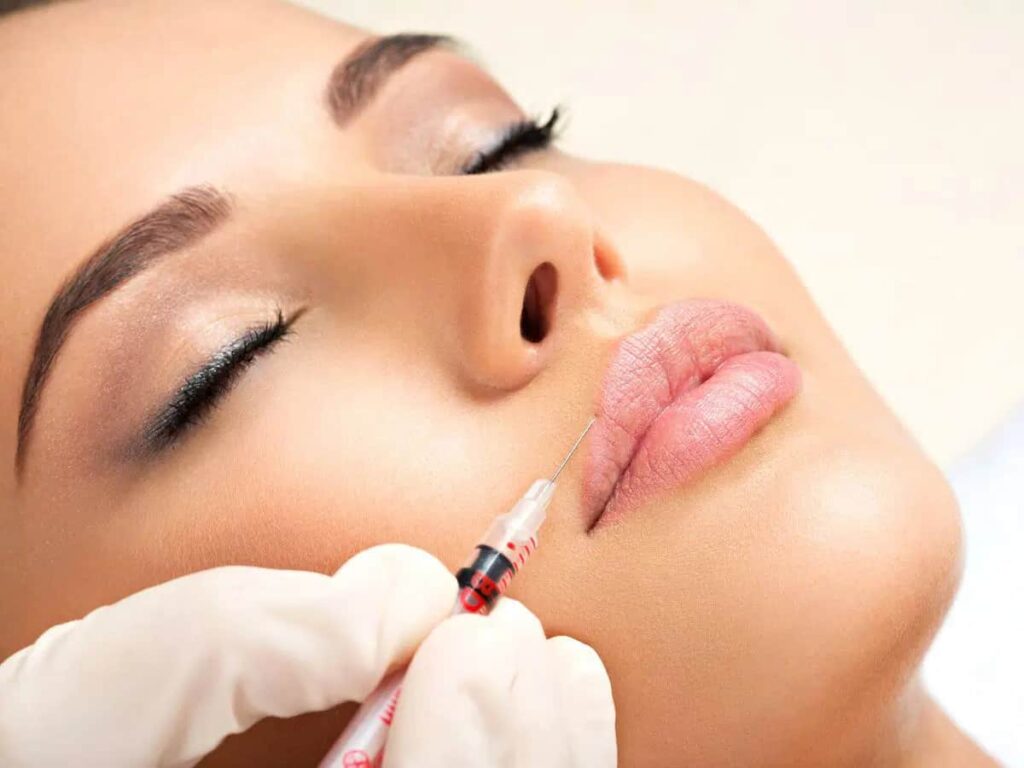
It’s possible to “spot correct” lip filler migration using this enzyme instead of dissolving all of the filler. It needs to be injected into the lips and may require more than one session.
Natural Metabolism
Remember, lip fillers are temporary because they’re eventually metabolised by the body.
This, however, can take as long as 2 years. Since lip filler migration can cause significant aesthetic concerns, this isn’t always the desired option.
However, if the problem is not that significant, you can also consider letting it go away on its own.
How To Prevent Lip Filler Migration?
There are a few things that you can do to prevent this scenario. These are as follows:
- Find the Right Practitioner – Make sure to find an experienced, licensed, and insured medical practitioner who has been administering lip fillers for quite some time.
- Ask About the Filler – Ask about the brand of the filler and the kind of filler that’s being injected into your lips. There are fake fillers available in the market. A reliable practitioner would be careful about this anyway.
- Follow the Aftercare – You must follow aftercare instructions, which avoid any rubbing, massaging, or exercising.
- Inform the Doctor About Past Treatments – To avoid lip filler migration, it’s important that you tell your doctor about any lip fillers that you have/have had.
- Don’t Get Fillers Too Often – Keep in mind that fillers can take years to dissolve. If you keep getting fillers with an interval of a few months while the previous one has not been dissolved, migration will very likely occur.
How Long After Getting Filler Dissolved Can You Get Filler Again?
You may have to wait for 4-6 weeks before getting lip fillers again after getting them dissolved. This is because your lips need some time to heal before you inject fillers into them once more.
Also, keep in mind that your doctor may even recommend you wait for 3-6 months before you get another lip filler procedure.
It will depend on the severity of the problem. It can only be assessed after you’ve consulted with a cosmetic dermatologist.
Is Lip Filler Migration Dangerous?
Hyaluronic acid is a naturally occurring lubricant in the human body, so in the event of lip filler migration, it should eventually be metabolised.
And as mentioned above, it’s unlikely that it will cause an allergic reaction.
What Are the Alternatives to Lip Fillers?
There are two different procedures that can enhance the volume of the lips.
Lip Lift
In lip lift surgery, the distance between the upper lip and the nose is shortened. This exposes more of the fleshy pink of the lip, making them look more voluminous.
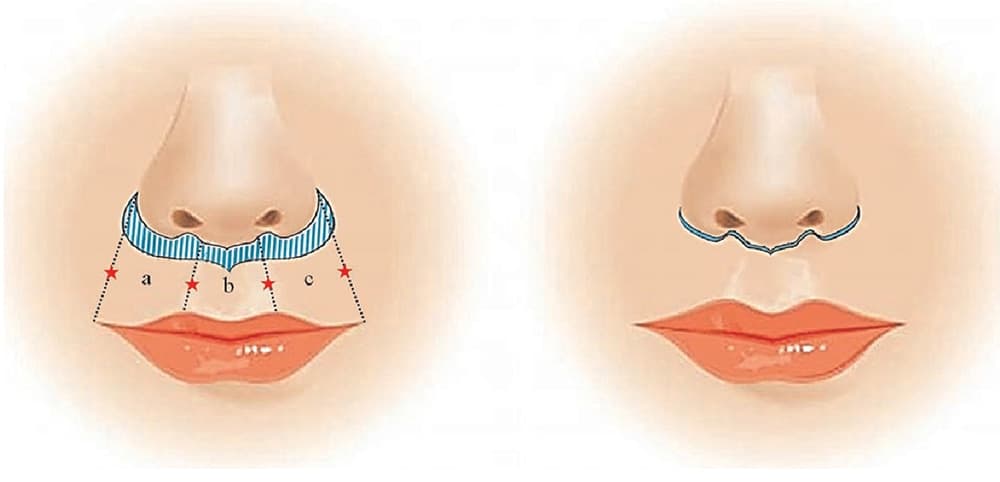
This will also expose more of your front teeth, which many people find attractive. The results from this procedure are also permanent, which is why some prefer this over getting fillers.
Fat Grafting
In fat grafting, fat tissue is taken from one area of the body of the patient and placed into another. For this, liposuction will also have to be performed. It’s possible to plump up the lips using this surgical technique.
Some of the fat indeed transferred will be absorbed by the body, but the surgeon will consider that before performing the surgery and inject the fat accordingly.
You will have swelling for some time after the procedure, but it can also give you results that can last for more than 5 years.
Lip Implants
Another permanent way to augment the shape and size of the lips is to get implants. For this, the surgeon will have to administer anaesthesia as incisions will be made on the lips.
For the placement of the implants, first, pockets will be created. And the incisions will be stitched afterwards. The whole procedure takes around 1 hour.
Conclusion
Lip filler migration is a rare complication of this procedure. Its risk is minimised if your doctor is experienced. They’ll know where to place the filler, how much and which one.
If you’re experiencing the problem already, there are a few ways to deal with it. However, it’s best to try and prevent this from happening altogether.
And you can do that by doing your research when looking for a clinic.
